Related Research Articles

The Daughters of Bilitis, also called the DOB or the Daughters, was the first lesbian civil and political rights organization in the United States. The organization, formed in San Francisco in 1955, was initially conceived as a secret social club, an alternative to lesbian bars, which were subject to raids and police harassment.

The homophile movement is a collective term for the main organisations and publications supporting and representing sexual minorities in the 1950s to 1960s around the world. The name comes from the term homophile, which was commonly used by these organisations. At least some of these organisations are considered to have been more cautious than both earlier and later LGBT organisations; in the U.S., the nationwide coalition of homophile groups disbanded after older members clashed with younger members who had become more radical after the Stonewall riots of 1969.
Pink Triangle Press is an independent, Canadian media organization specializing in LGBTQ2S+ journalism, television and online interactive media. Founded in 1971, Pink Triangle Press is one of the longest-publishing LGBTQ2S+ media groups in the world. Today, Pink Triangle Press publishes Xtra, an online magazine and community platform covering LGBTQ2S+ culture, politics and health. Pink Triangle Press also publishes a series of newsletters including Pink Ticket Travel and Wander+Lust. Pink Ticket Travel is a Queer travel newsletter featuring travel tips and guidelines for LGBTQ2S+ travelers. Wander+Lust is a newsletter featuring travel tips and tricks for gay and bi men, including insider recommendations and exclusive offers.

The Body Politic was a Canadian monthly magazine, which was published from 1971 to 1987. It was one of Canada's first significant gay publications, and played a prominent role in the development of the LGBT community in Canada.
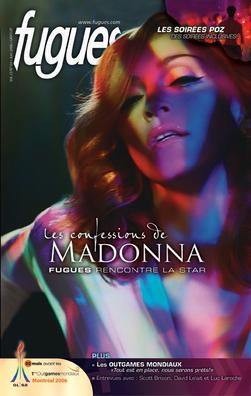
Fugues is a magazine with a focus on gay content, which publishes monthly in Montreal, Quebec, Canada, since April 1984. The magazine is primarily written in French, although some English content is also published as well. It focuses on news related to LGBT communities, gay culture, nightlife, health, fitness, fashion, travel, festivals, arts and entertainment. Each issue contains articles on news, trends, culture, nightlife, community activities, special folders, and opinion articles.

The Ladder was the first nationally distributed lesbian publication in the United States. Published from 1956 to 1972, The Ladder was the primary monthly publication and method of communication for the Daughters of Bilitis (DOB), the first lesbian organization in the US. It was supported by ONE, Inc. and the Mattachine Society, with whom the DOB retained friendly relations. The name of the magazine was derived from the artwork on its first cover, simple line drawings showing figures moving towards a ladder that disappeared into the clouds.
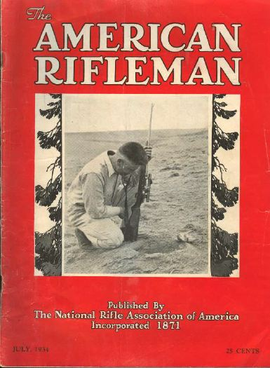
American Rifleman is a United States-based monthly shooting and firearms interest publication, owned by the National Rifle Association of America (NRA). It is the 33rd-most-widely-distributed consumer magazine and the NRA's primary magazine. The magazine has its headquarters in Fairfax, Virginia.
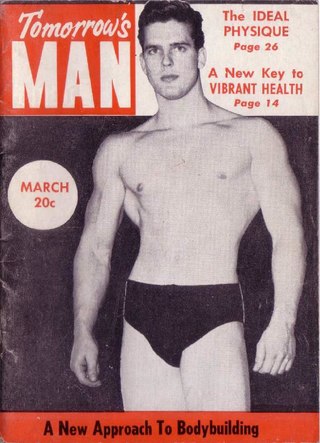
Physique magazines or beefcake magazines were magazines devoted to physique photography — that is, photographs of muscular "beefcake" men – typically young and attractive – in athletic poses, usually in revealing, minimal clothing. During their heyday in North America in the 1950s to 1960s, they were presented as magazines dedicated to fitness, health, and bodybuilding, with the models often shown demonstrating exercises or the results of their regimens, or as artistic reference material. However, their unstated primary purpose was erotic imagery, primarily created by and for gay men at a time when homosexuality was the subject of cultural taboos and government censorship.
Rites was a Canadian magazine, published for gay, lesbian, bisexual, and transgender communities in Canada from 1984 to 1992.

Q-Notes is a lesbian, gay, bisexual and transgender (LGBT) newspaper serving North Carolina and South Carolina. It is based in Charlotte, North Carolina. Published every other week, it has a circulation of 11,000 print copies and is the largest print publication serving the LGBT community in the American Southeast. The paper traces its origins to the monthly newsletter of the Queen City Quordinators, a Charlotte LGBT organization, which they began publishing in 1983. In 1986, Qnotes changed to a monthly tabloid. In 2006, it merged with the Raleigh, N.C. LGBT newspaper The Front Page.
The Witchcraft Research Association was a British organisation formed in 1964 in an attempt to unite and study the various claims that had emerged of surviving remnants of the so-called Witch-Cult, such as those of Gerald Gardner, Robert Cochrane, Sybil Leek, Charles Cardell, and Raymond Howard.
Perceptions was an LGBT news magazine which began publication in 1983 in Saskatoon, Saskatchewan, Canada.
Erie Gay News is a monthly newsletter reporting news and current events concerning the gay community in the Erie, Pennsylvania, region. It was first published by a local gay man as a double-sided single sheet on a monthly/bi-monthly basis, beginning in early 1992. Beginning in January 1993, it was published on a monthly basis as a multiple-page document.
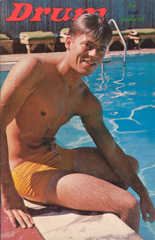
Drum was an American gay men's culture and news magazine published monthly in Philadelphia, Pennsylvania, featuring homoerotic photographs as well as news, book reviews, editorials, and fiction. It was published beginning in October 1964 by the homophile activist group the Janus Society as a continuation of the group's monthly newsletter. Edited by Clark Polak, the president of the Janus Society, the magazine represented Polak's radical approach to the homophile movement by emphasizing sexual liberation when other homophile organizations were focused on assimilating with straight society.
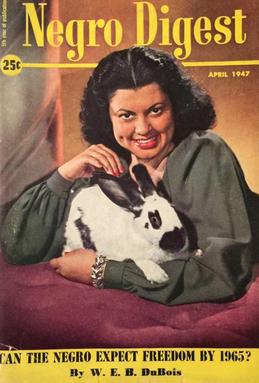
The Negro Digest, later renamed Black World, was a magazine for the African-American market. Founded in November 1942 by publisher John H. Johnson of Johnson Publishing Company, Negro Digest was first published locally in Chicago, Illinois. The magazine was similar to the Reader's Digest but aimed to cover positive stories about the African-American community. The Negro Digest ceased publication in 1951 but returned in 1961. In 1970, Negro Digest was renamed Black World and continued to appear until April 1976.

Gerald Hannon was a Canadian journalist whose work appeared in major Canadian magazines and newspapers.
Rupert Raj is a Canadian trans activist and a transgender man. His work since his own gender transition in 1971 has been recognized by several awards, as well as his inclusion in the National Portrait Collection of The ArQuives: Canada's LGBTQ2+ Archives.
The following is a timeline of lesbian, gay, bisexual, transgender and queer (LGBTQ) journalism history.

TWO, subtitled The Homosexual Viewpoint in Canada, was a Toronto gay magazine published between 1964 and 1966. It combined physique photography with a variety of editorial content including articles, reviews of local gay nightlife, and fiction. TWO was one of Toronto's first gay magazines, and was among the first magazines to combine the pictorial content of the physique genre with overtly gay editorial content.
References
- 1 2 McLeod, Donald W. (2003). A Brief History of GAY: Canada's First Gay Tabloid, 1964-1966. Homewood Books. ISBN 9780968382912.
- ↑ "Our Silver Anniversary: Canadians have been organizing for twenty five years!". Newsletter of the Canadian Gay Archives. National Archives for Lesbians and Gay Men. 7. June 1989.